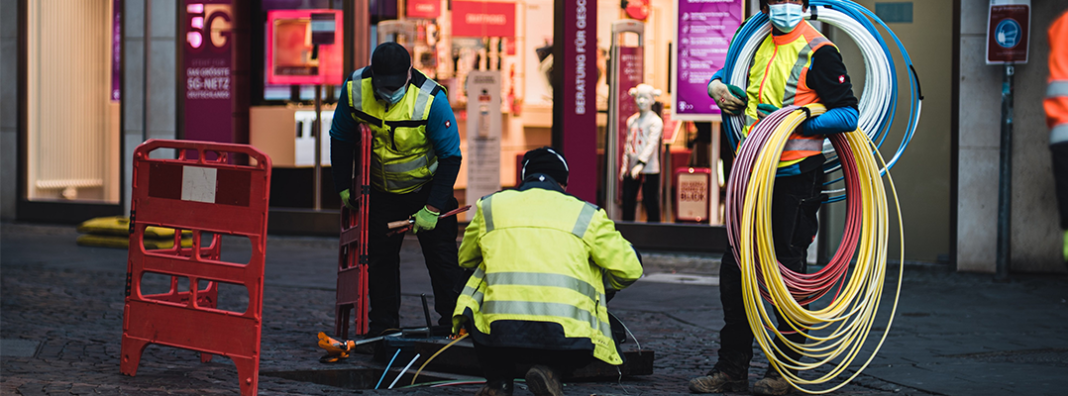This article was co-authored by Pablo Garcia Quint, a Technology and Innovation Policy Fellow at Libertas Institute.
Years have passed since the launch of an initiative to close the digital divide during the pandemic-era lockdowns. Yet, not a single American has been connected to broadband. Now, President Trump issued an executive order to pause federal infrastructure funding, including the Broadband Equity, Access, and Deployment (BEAD) program — a step that can hopefully be used to reassess and redirect efforts that have so far proven ineffective.
BEAD was intended to revolutionize internet access in America, especially for rural and underserved communities. With a $42.45 billion budget, the program was supposed to bridge the digital divide and ensure that every American had access to high-speed broadband. But after nearly three years under the guidance of the National Telecommunications and Information Administration (NTIA), the program has faced significant delays and challenges, leaving communities without results.
NTIA’s Lack of Flexibility and Leadership Challenges
A major roadblock is the NTIA’s inflexible approach, focusing solely on fiber, and overlooking more cost-effective and quicker solutions that better fit the geographical characteristics of certain regions.
Case in point, a statement for a House Subcommittee Hearing, Montana’s Department of Administration and state’s Chief Operating Officer, Misty Giles, showed how Montana’s rural needs have been overlooked, with insufficient funding based on Federal Communications Commission (FCC) data. The rocky and difficult parts of Montana where broadband is needed are characterized by low populations and high cost of implementation.
This naturally leads to seeking technologies that better adapt to these characteristics, but the current NTIA’s requirements prevent that. The NTIA disqualifies alternative technologies from providers if fiber can hypothetically be built, regardless of cost or feasibility. This undermines efficiency and contradicts the tech-neutral, bipartisan intent behind the Infrastructure Investment and Jobs Act (IIJA), which allocated the funds for the BEAD program.
For example, some federal requirements, such as a mandate requiring providers to offer low-cost service options and comply with climate and labor rules have gotten in the way of ISPs that probably could offer good service in some areas.
Other burdensome requirements such as the one for bandwidth, end up making an almost arbitrary and nearly impossible requirement for alternative technologies. Some of these rules are pushing states like Florida, Louisiana, and Virginia, which are already embracing tech-neutral policies, to reconsider their broadband strategies entirely.
All of this creates unnecessary bureaucratic processes to fund proposals. However, the resignation of NTIA Administrator Alan Davidson given the recent change of administrations, could give some hope for the future of broadband and BEAD. The new leadership the program will have could make some of these requirements more open to alternative technologies.
Some of the Solutions Need to Move in the Direction of Reverse Auctions and Alternative Technologies
What are some of the alternatives the new BEAD leadership can consider? Traditionally, reverse auctions have been a successful mechanism for leveraging private funds and promoting cost-effective broadband deployment.
Programs like the FCC’s Rural Digital Opportunity Fund (RDOF) and Connect America Fund Phase II (CAF II) demonstrated that reverse auctions can reduce government spending by encouraging providers to compete on cost and service quality. Without this competitive bidding process, the BEAD program risks overestimating funding needs and failing to maximize private investment.
The other side of the problem demands options beyond fiber optic in cases where it’s too expensive. Alternative technologies like low-earth orbit (LEO) satellites and fixed wireless networks could provide quicker, more affordable solutions.
LEO satellite broadband providers, like SpaceX’s Starlink and Amazon’s Project Kuiper, are already offering high-speed, low-latency internet in areas where fiber it’s too expensive. Emerging satellite companies have already demonstrated they can exceed BEAD’s speed and latency requirements. Starlink has reported download speeds of up to 265 Mbps, far surpassing BEAD’s standard of 100 Mbps download and 20 Mbps upload.
Companies such as Toronto Wireless have also offered alternative ways to implement broadband. The CEO of the company pointed out in front of a Subcommittee hearing back in September that in sparsely populated areas, a single fiber connection could cost as much as $300,000. There are better alternatives to better serve the public, such as wireless and satellite connections.
Addressing Delays, Cost Overruns, and One-Size-Fits-All Broadband Solutions
Given all the issues the BEAD has, we can expect to have a breath of fresh air with the change in leadership.
Embracing tech neutrality is a crucial step, but it’s not enough on its own. The BEAD program needs to take it a step further by using reverse auctions to allocate funds more efficiently. Reverse auctions have already shown they can speed up broadband expansion while keeping costs down. They work by letting providers compete to see who can deliver service at the lowest price, which drives both innovation and competition. This way, taxpayer money goes further, helping connect more Americans without breaking the bank.
Understandably, many of the government officials involved in this program want to prioritize sustainability and not just implementation. But when the cost of connecting one single house in rural areas exceeds $50,000, or even $300,000, as pointed out above, it is time to look for alternatives. The downside of focusing too much on sustainability is that policymakers end up choosing a “one size fits all” solution, like only opting for fiber optic.
If we don’t cut through the red tape, embrace all technologies, and adopt reverse auction authority, we’re going to squander billions without connecting the people who need it most. It’s time for the BEAD program to align with both technological innovation and proven funding mechanisms to truly bridge the digital divide.






